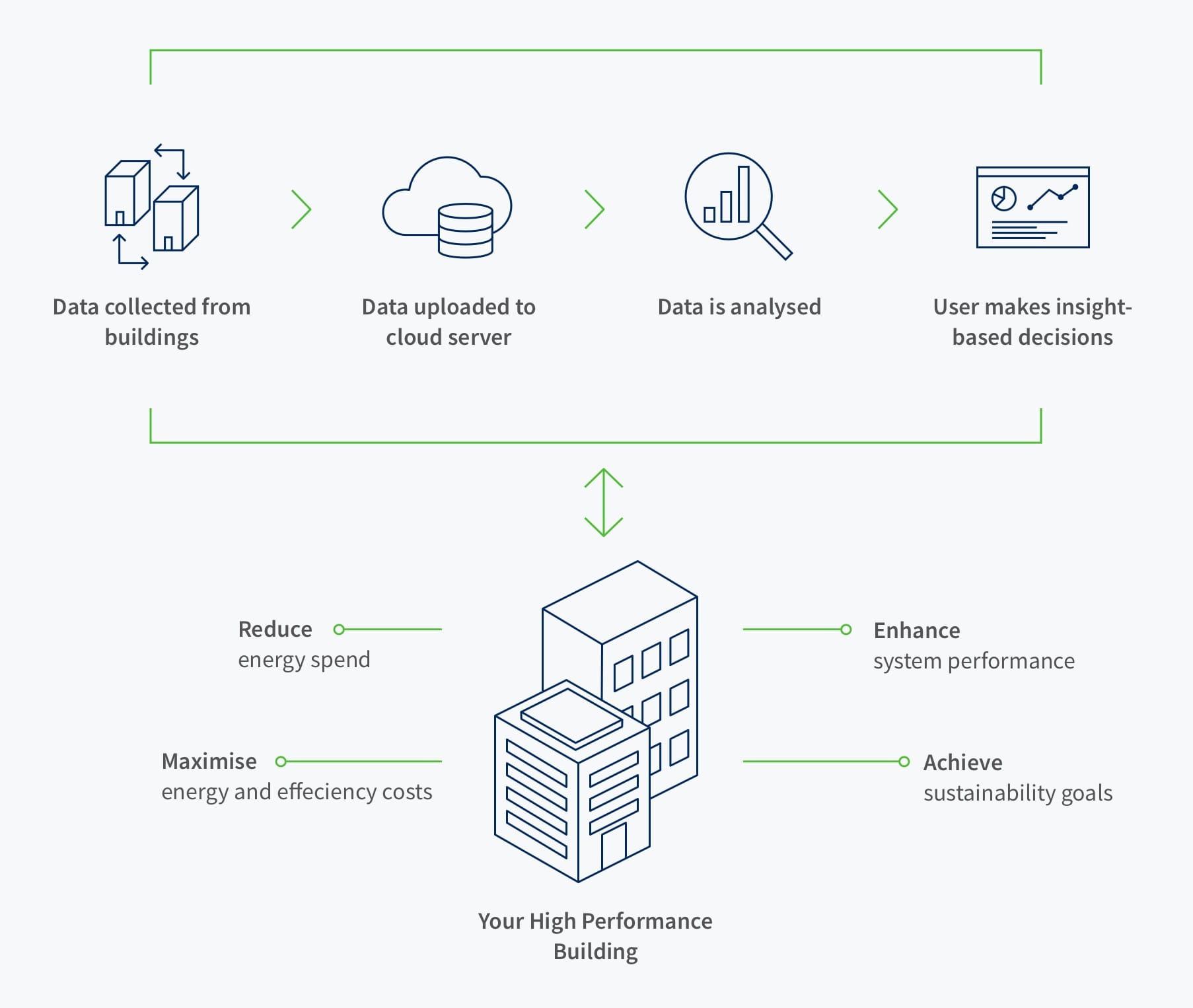Building Intelligence
An intelligent building unlocks the hidden potential of your building management system (BMS). At BTL, we advise our clients to build smart technology into their BMS today so that they are equipped for tomorrow. What do we mean by that?
The journey to an intelligent building starts by setting yourself up with the right infrastructure. We can set your building up with the technology to extract information and turn data into useful information. Building owners and managers use this information to increase operating efficiencies.
Crucially, smart buildings seamlessly integrate and adapt to the latest advances in building technology, such as big data technology and the internet of things (IoT), to produce intelligent insights and actionable information.

Building devices do more than meet the needs of your occupants. They are also valuable sources of information. Using advanced technology, smart buildings access that information and leverage it to generate efficiency gains.
Different types of sensors track features such as motion, light temperature and air flow that collect a vast amount of data about building function, operations and use. A BMS system operates as a hyperconnected communications infrastructure: various parts of the BMS communicate with each other, which generates a new set of information.
Data from different systems and devices is aggregated into one centralised platform. Different analytical tools and software is run on that data and, using algorithms (or rules), identify trends and insights.
The BMS will autonomously turn that information into action across multiple subsystems. For example, adjusting heating and lighting simultaneously in response to occupancy levels.
This unlocks huge efficiency gains for building owners and managers.
IoT refers to a group of standalone objects or devices that utilise the internet to communicate information.
IoT is transforming building automation by increasing BMS capacity and complexity. IoT-enabled devices transfer data to the cloud to generate never-before-seen levels of visibility and control over a building’s devices, systems and facilities.
Crucially, IoT increases ease of connectivity, as more and more devices are able to collect, communicate, share and store information using the internet.
Connected devices can be monitored or controlled remotely. For example, building operations, such as HVAC or lighting control, can be scheduled in advance, adjusted or rescheduled via other interconnected devices such as tablets and smartphones.
The life cycle of a BMS does not end at the operation stage. It is optimised over time in a continuous cycle.
Big data technology applies advanced analytics to higher volumes of data, at high velocities and from a variety of sources.
Crucially, big data analytics does not occur in isolation. It analyses multiple devices, subsystems, external and variable factors that interact and affect each other. For example, big data technology can combine the short-term weather forecast with data on the building’s thermal properties to generate energy efficiencies in real time.
BTL collects that data and uses it to generate useful information to inform our customers’ business operations. For example, data analytics can be used to learn the way an office building is being occupied, identify the external weather conditions, compare required energy targets and deliver adaptive control to equipment to deliver comfort efficiently.

